Discover 11 hidden attractions, cool sights, and unusual things to do in Macclesfield (United Kingdom). Don't miss out on these must-see attractions: Macclesfield Town Hall, Macclesfield Sunday School, and St Michael's Church. Also, be sure to include Nether Alderley Mill in your itinerary.
Below, you can find the list of the most amazing places you should visit in Macclesfield (England).
Table of Contents
Macclesfield Town Hall
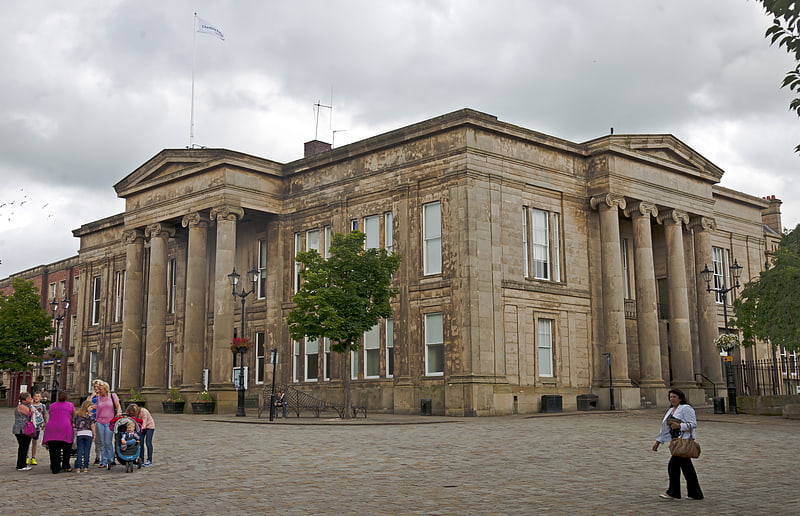
Macclesfield Town Hall is a Georgian municipal building in the Market Place in Macclesfield, Cheshire, England. The building incorporates the former Borough Police Station. The town hall is listed at grade II*.[1]
Address: Market Place, Macclesfield
Macclesfield Sunday School

School in Macclesfield, England. Macclesfield Sunday School is in Roe Street, Macclesfield, Cheshire, England. It started in 1796 as a non-denominational Sunday School in Pickford Street, which catered for 40 children. It was founded by John Whitaker whose objective was "to lessen the sum of human wretchedness by diffusing religious knowledge and useful learning among the lower classes of society". Though chapels set up their denominational schools, the Sunday School committee in 1812 elected to erect a purpose-built school on Roe Street. The Big Sunday School had 1,127 boys and 1,324 girls on its books when it opened. The building is now known as The Old Sunday School and is part of Macclesfield Museums.
Sunday schools were first set up in the 1780s to provide education to working children on their one-day off from the factory. It was proposed by Robert Raikes, editor of the Gloucester Journal in an article in his paper and supported by many clergymen. It aimed to teach the youngsters reading, writing and ciphering and a knowledge of the Bible.
In 1785, it was reported that 250,000 children were attending Sunday School and there were 5,000 in Manchester alone. By 1895, the Society for the Establishment and Promotion of Sunday Schools had distributed 91,915 spelling books, 24,232 Testaments and 5,360 Bibles. The Sunday School movement was cross-denominational, and through subscription built large buildings that could host public lectures as well as classrooms. In the early days, adults attended the same classes as the infants, as each were instructed in basic reading. In Macclesfield, the Methodists withdrew from the Large Sunday School and built their own, and the Anglicans set up their own "National" schools that acted as Sunday Schools and day schools. These schools were the precursors to a national system of education. Later, a ragged school was set up for the children of the poor, the rough sleepers and children from the workhouse.
The role of the Sunday Schools changed with the Education Act 1870. In the 1920s, they promoted sports, and it was common for teams to compete in a Sunday School League. They were social centres hosting amateur dramatics and concert parties. By the 1960s the term Sunday School could refer to the building and not to any education classes, and by the 1970s even the largest Sunday School at Stockport had been demolished. The Macclesfield Large Sunday School was rescued and converted into the Macclesfield Heritage Centre.[2]
Address: Roe Street, SK11 6UT Macclesfield
St Michael's Church
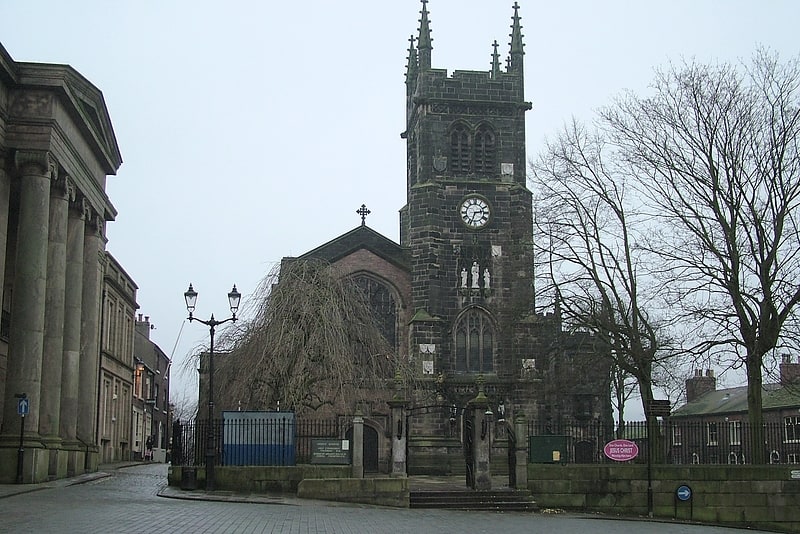
Building in Macclesfield, England. St Michael and All Angels Church overlooks Market Place in the town of Macclesfield, Cheshire, England. It is an active Anglican parish church in the diocese of Chester, the archdeaconry of Macclesfield and the deanery of Macclesfield. It forms a team parish with three other Macclesfield churches: All Saints, St Peter's and St Barnabas'. The church is recorded in the National Heritage List for England as a designated Grade II* listed building.
A church has been on the site since the 13th century. There have been two major reconstructions, the last being in 1898–1901. Two ancient chapels remain dating from the 15th and 16th centuries. Inside the church are a number of tombs and memorials, mainly to the memory of the Savage and Legh families.[3]
Address: Market Pl, SK10 1HG Macclesfield
Nether Alderley Mill
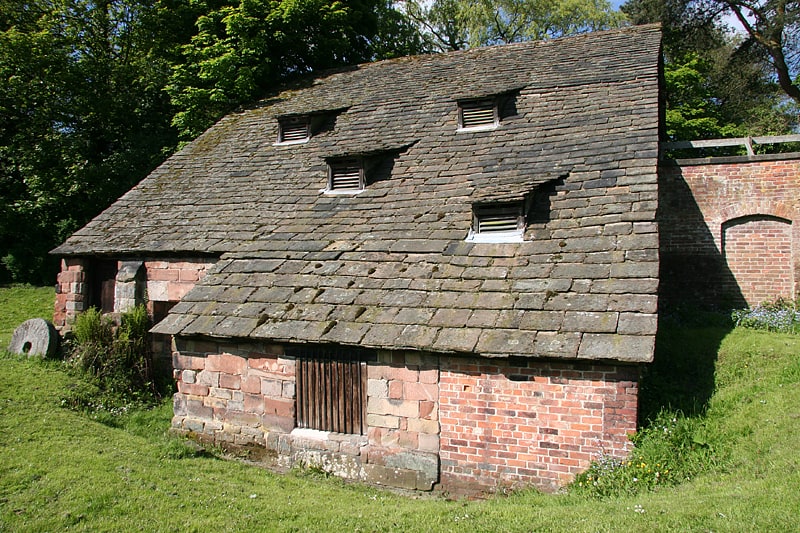
Building in Nether Alderley, England. Nether Alderley Mill is a 16th-century watermill located in Congleton Road, to the south of the village of Nether Alderley, Cheshire, England. It is owned by the National Trust, and is recorded in the National Heritage List for England as a designated Grade II* listed building. It is a unique example of a triple overshot waterwheel system, two of which are in working order. It is one of only four virtually complete corn mills in Cheshire.[4]
Address: Congleton Road, SK10 4TW Macclesfield
Hare Hill
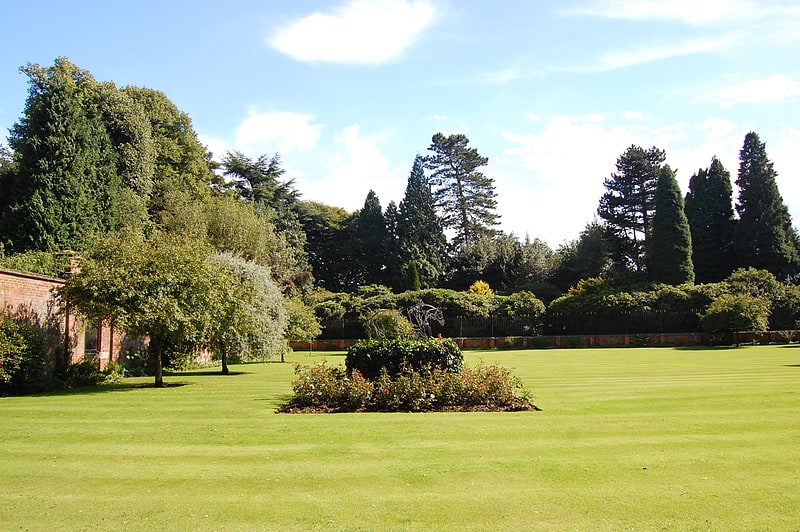
Tourist attraction in England. Hare Hill Hall is a country house and a garden in the parish of Over Alderley, Cheshire, England. The house and grounds are privately owned, and the separate nearby garden is in the care of the National Trust.[5]
Address: Over Alderley, SK10 4QBT Macclesfield
St Paul's Church
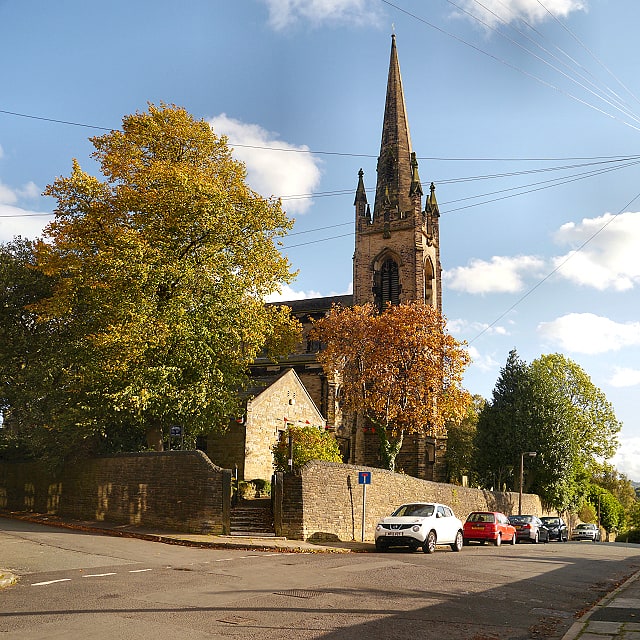
Church in Macclesfield, England. St Paul's Church is in Brook Street, Macclesfield, Cheshire, England. It is an active Anglican parish church in the deanery of Macclesfield, the archdeaconry of Macclesfield, and the diocese of Chester. The church is recorded in the National Heritage List for England as a designated Grade II listed building. It was a Commissioners' church, having received a grant towards its construction from the Church Building Commission.[6]
Address: 7 Glegg Street, Macclesfield
Christ Church
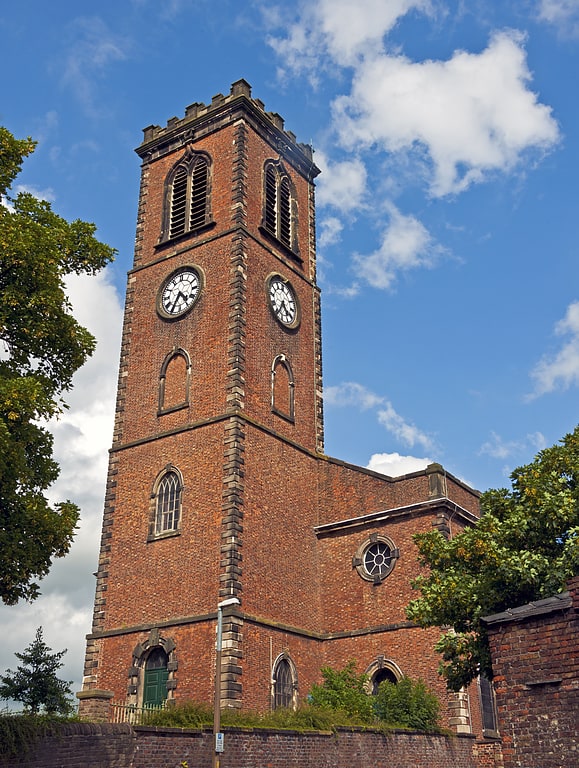
Building in Macclesfield, England. Christ Church is a redundant Anglican church in Great King Street, Macclesfield, Cheshire, England. It is recorded in the National Heritage List for England as a designated Grade II* listed building, and is under the care of the Churches Conservation Trust. It is open to visitors at advertised times. The church was in use until 1981. It remains consecrated and is used occasionally for services.[7]
St James' Church
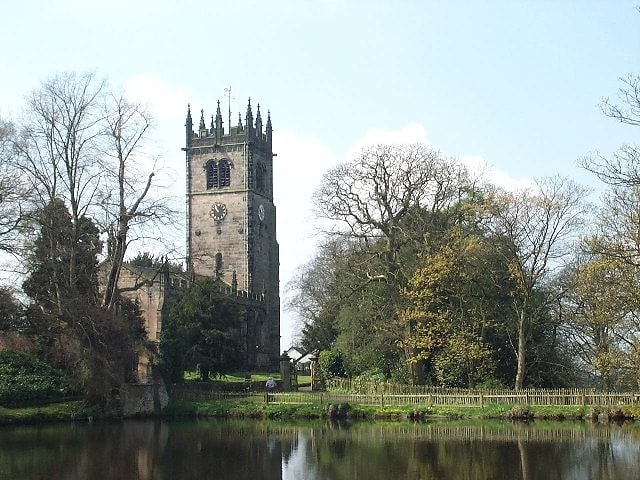
Building in Gawsworth, England. St James' Church is in the village of Gawsworth, Cheshire, England, and is sited near Gawsworth Hall. It is recorded in the National Heritage List for England as a designated Grade I listed building. It is an active Anglican parish church in the diocese of Chester, the archdeaconry of Macclesfield and the deanery of Macclesfield. Clifton-Taylor includes it in his list of 'best' English parish churches. The authors of the Buildings of England series describe the church as being "pretty, but odd".[8]
Address: Church Ln, SK11 9RJ Macclesfield
Macclesfield Cemetery
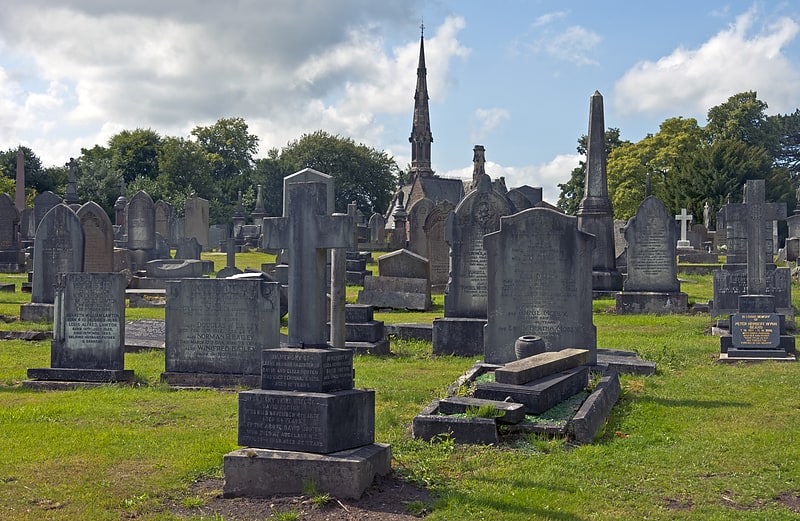
Cemetery in Macclesfield, England. Macclesfield Cemetery, is a Victorian cemetery located on Prestbury Road, Macclesfield, Cheshire. It was opened on 17 May 1866 and consists of 68 acres of land including gardens of remembrance, cemetery walks take place three times a year. The site contains three chapels, terrace walks overlooking a stream and examples of monumental stone masonry. Macclesfield Crematorium is located within the grounds, the cemetery lodge is on Prestbury Road.[9]
Address: Prestbury Road, Macclesfield
St Peter's Church
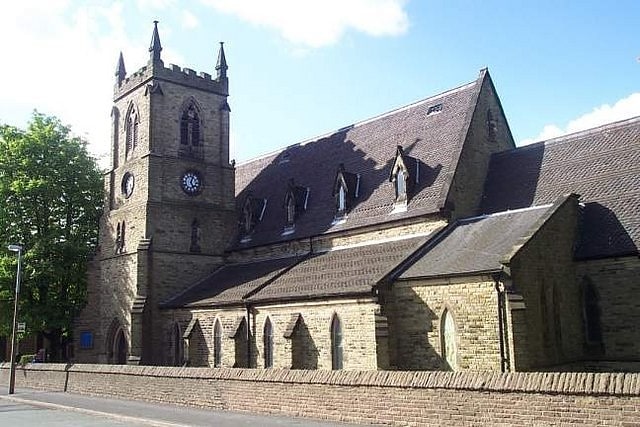
Church in Macclesfield, England. St Peter's Church is in Windmill Street, Macclesfield, Cheshire, England. It is an active Anglican parish church in the diocese of Chester, the archdeaconry of Macclesfield, and the deanery of Macclesfield. It forms a team ministry with three other Macclesfield churches: St Michael, All Saints, and St Barnabas. The church is recorded in the National Heritage List for England as a designated Grade II listed building. It was a Commissioners' church, having received a grant towards its construction from the Church Building Commission.[10]
Address: Windmill Street, Macclesfield
Capesthorne Hall
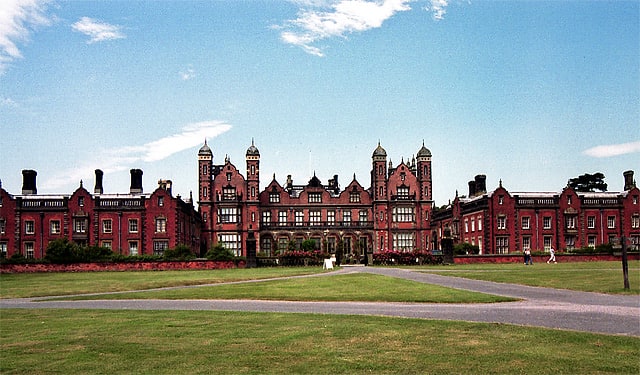
Heritage building in England. Capesthorne Hall is a country house near the village of Siddington, Cheshire, England. The house and its private chapel were built in the early 18th century, replacing an earlier hall and chapel nearby. They were built to Neoclassical designs by William Smith and his son Francis. Later in the 18th century, the house was extended by the addition of an orangery and a drawing room. In the 1830s the house was remodelled by Edward Blore; the work included the addition of an extension and a frontage in Jacobean style, and joining the central block to the service wings. In about 1837 the orangery was replaced by a large conservatory designed by Joseph Paxton. In 1861 the main part of the house was virtually destroyed by fire. It was rebuilt by Anthony Salvin, who generally followed Blore's designs but made modifications to the front, rebuilt the back of the house in Jacobean style, and altered the interior. There were further alterations later in the 19th century, including remodelling of the Saloon. During the Second World War the hall was used by the Red Cross, but subsequent deterioration prompted a restoration.
The hall is built in brick with ashlar dressings and slate roofs, and is a Grade II* listed building. It has a long entrance front consisting of a three-storey central block with lateral wings, each of which has two four-storey turrets. Outside this on each side are two-storey service blocks that project forward, forming a three-sided entrance forecourt. The ground-floor public rooms include a drawing room, a dining room, and a sculpture gallery. The bedrooms, dressing rooms and another gallery are on the first floor. The hall stands in grounds containing gardens and parkland that includes a lake. A particularly notable listed structure in the grounds is the Grade II* listed private chapel, also designed by William Smith, that is contemporaneous with the hall, together with its elaborate Grade II listed gates and gate piers. The bridge over the lake, an icehouse and a lodge are also listed. The earthworks of the previous hall and chapel and a deserted medieval village in the grounds are together designated as a scheduled ancient monument.
Today the hall, chapel and grounds are privately owned by the Bromley-Davenport family. They are open to the public at advertised times, and are used for special events. They are also available to be hired for purposes such as weddings and corporate events.[11]
Address: Siddington, near Macclesfield, Macclesfield